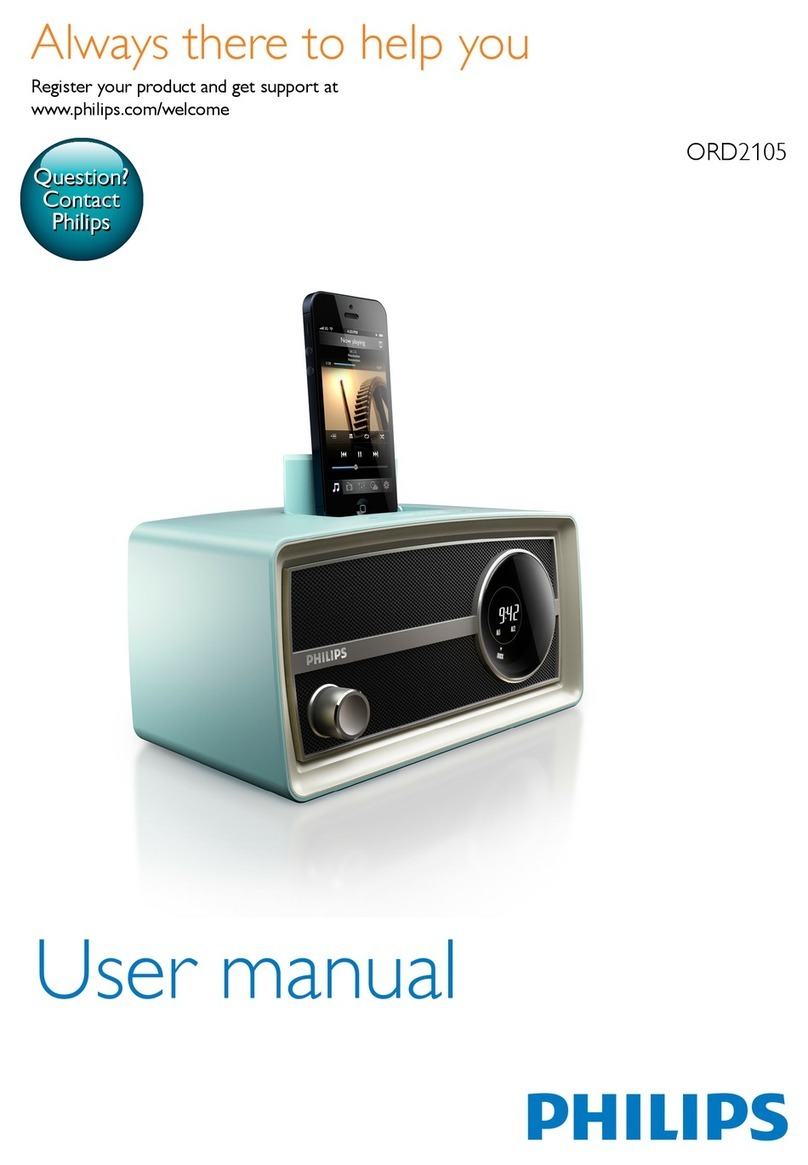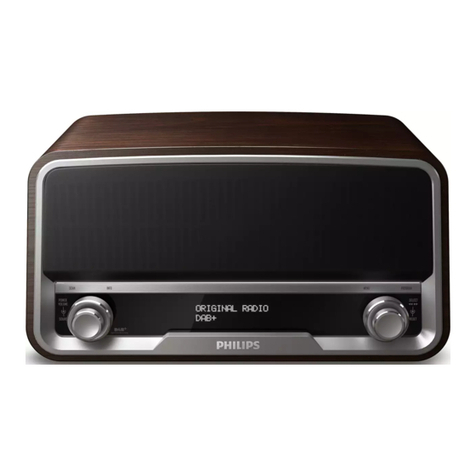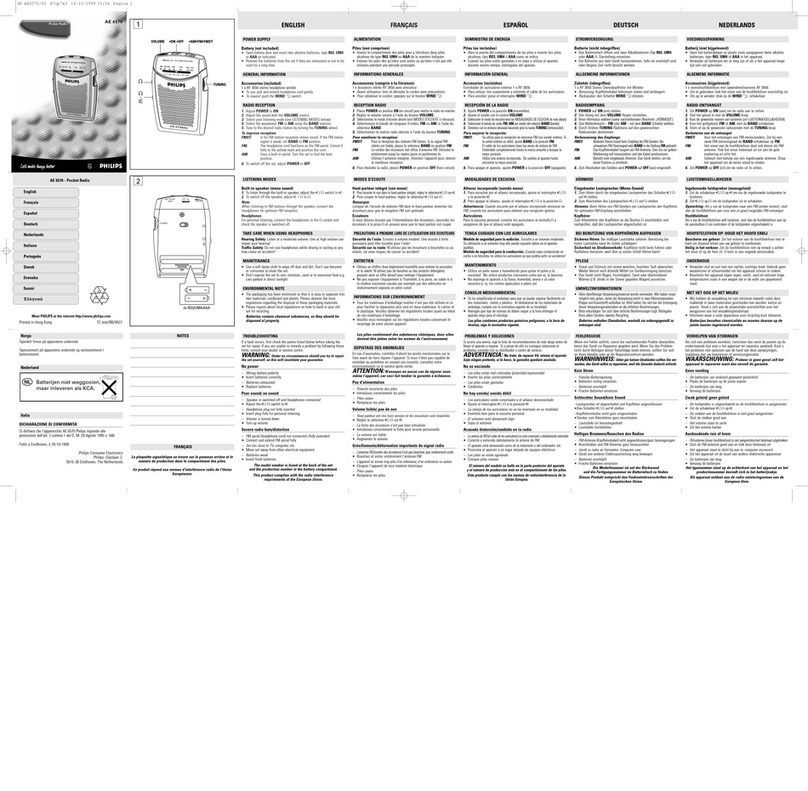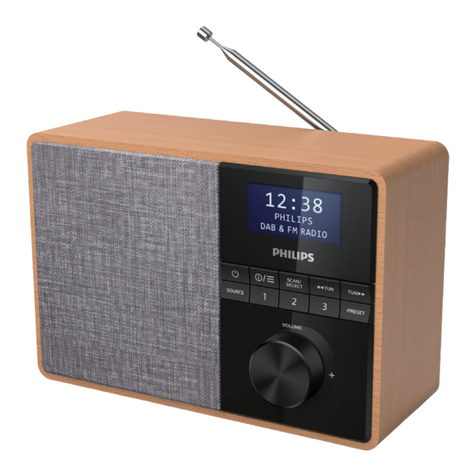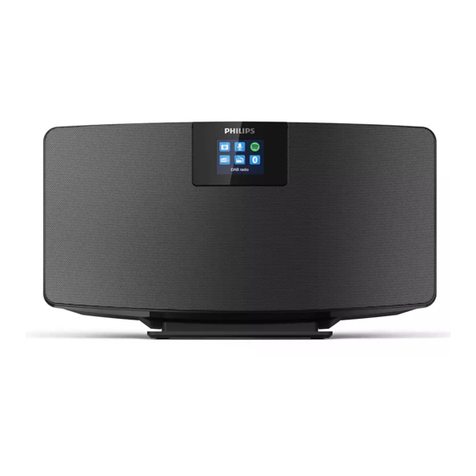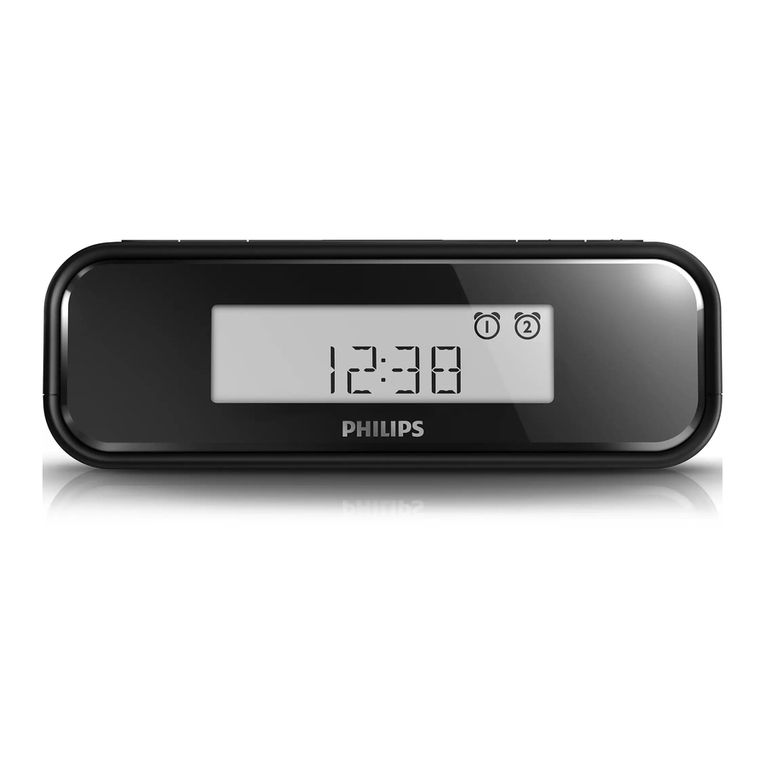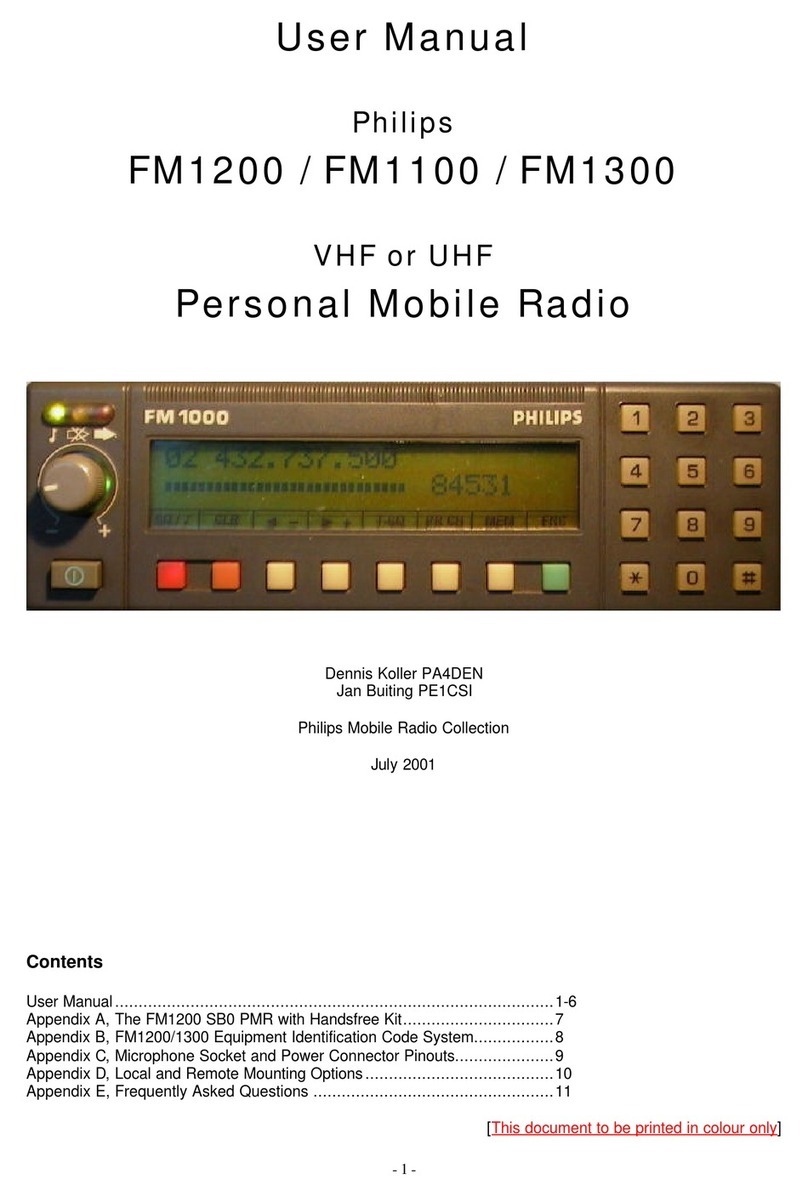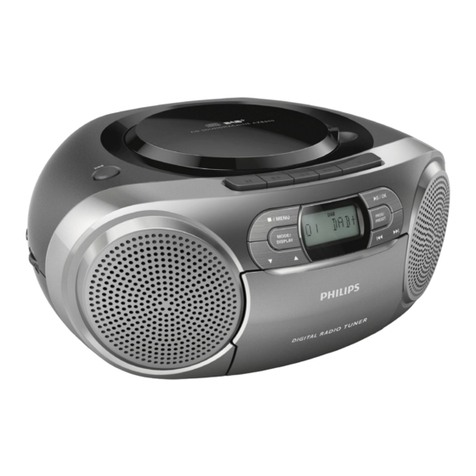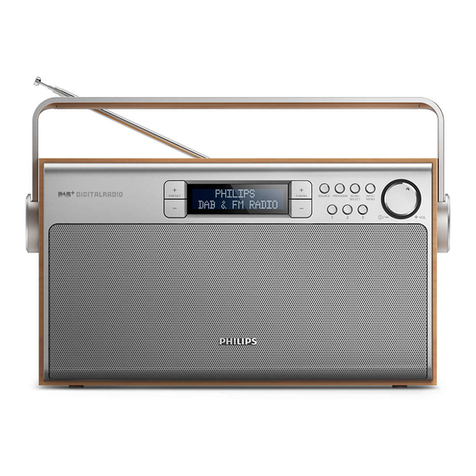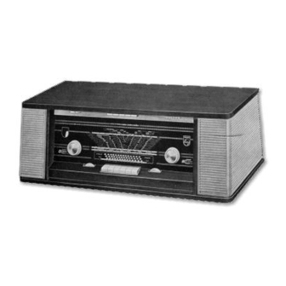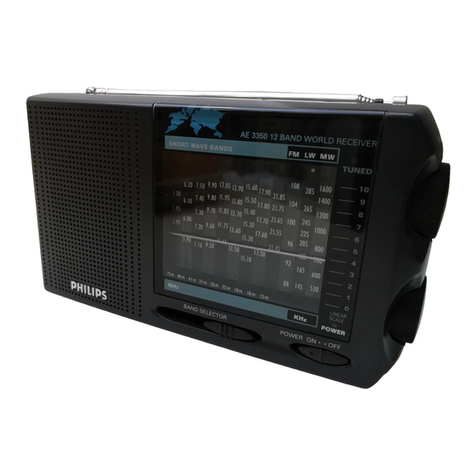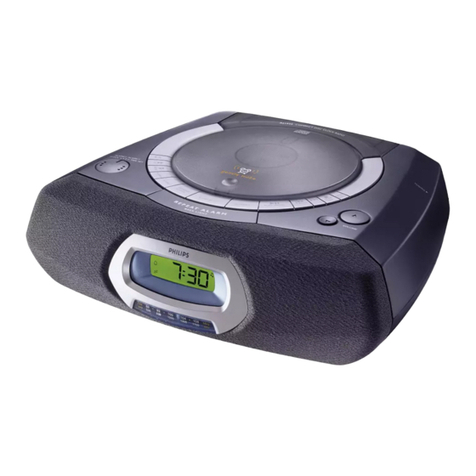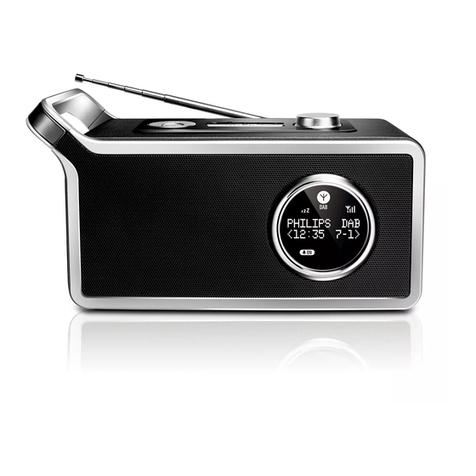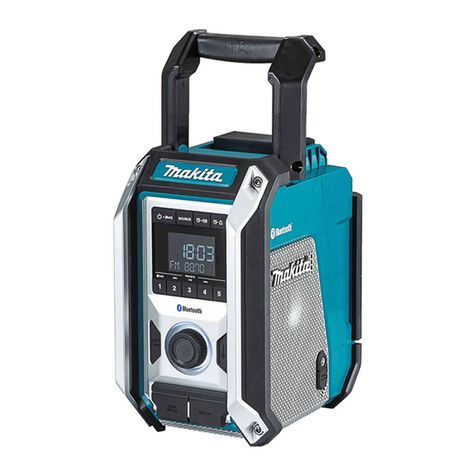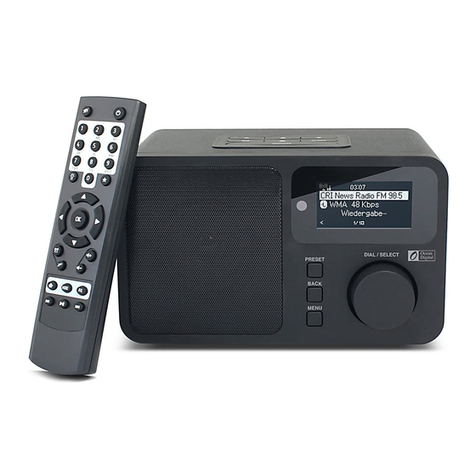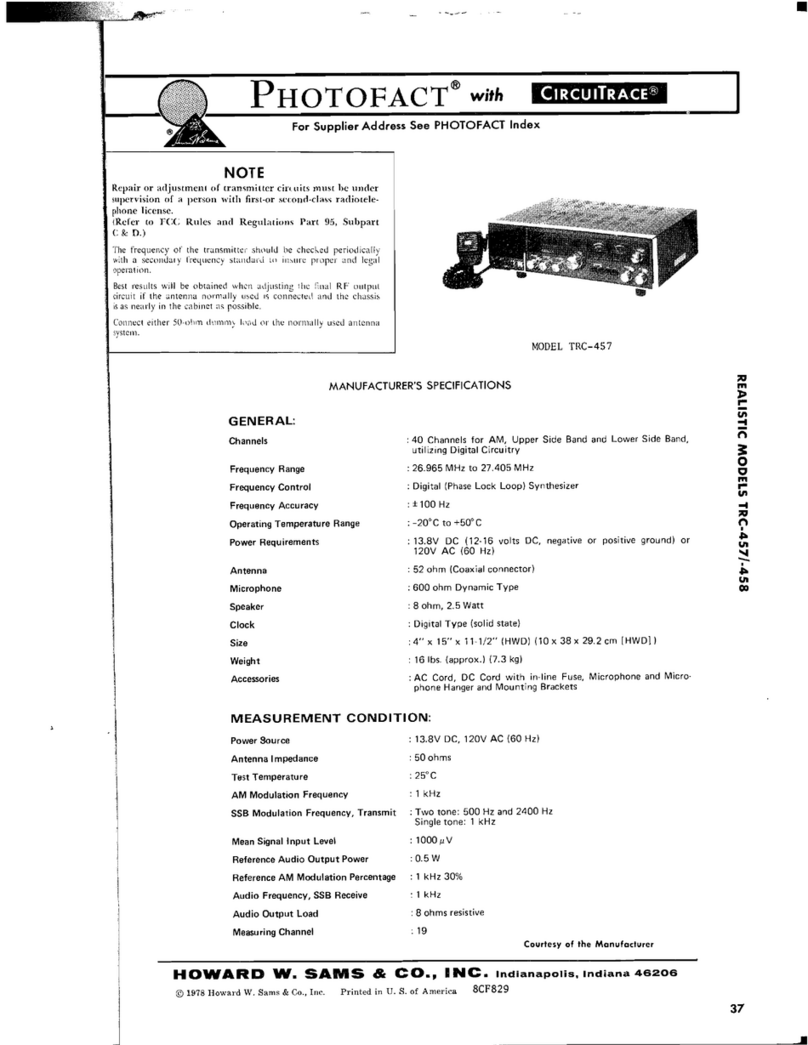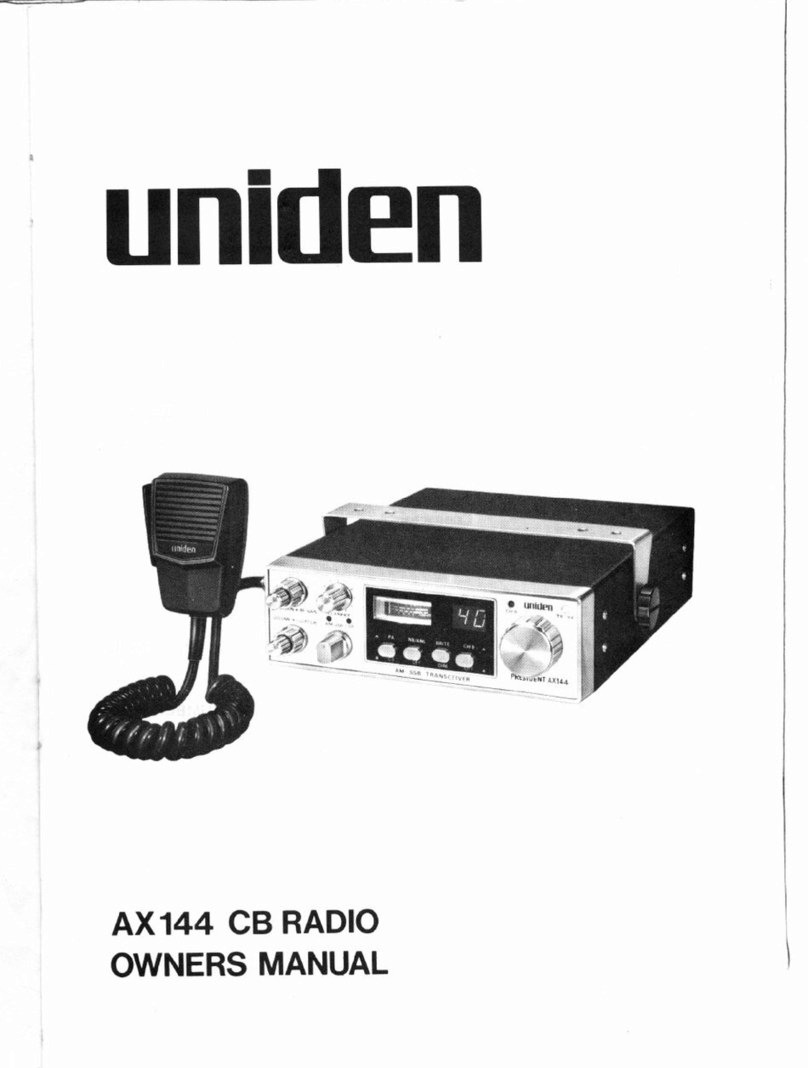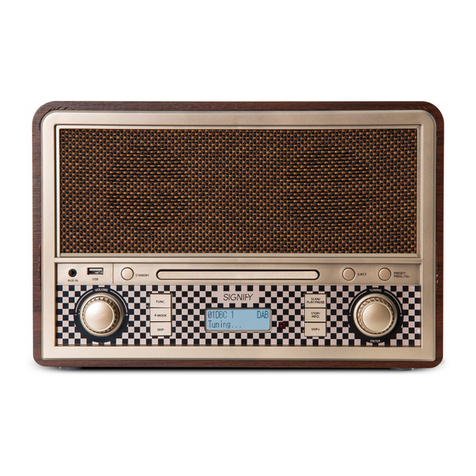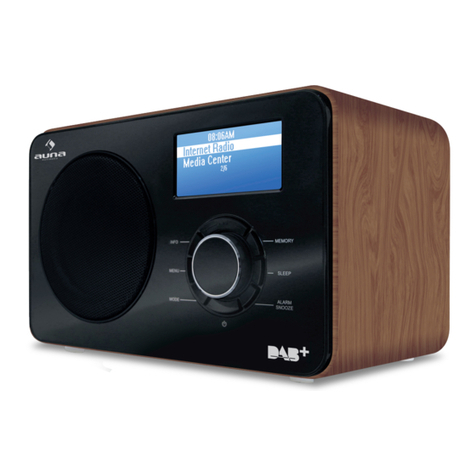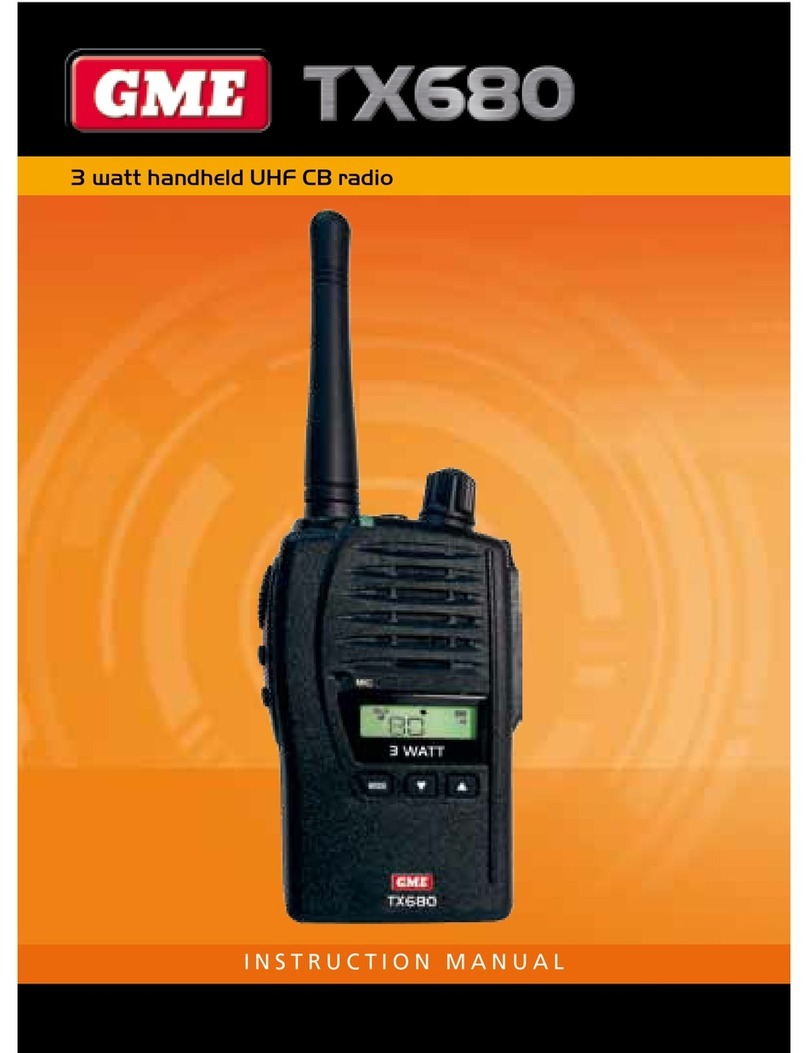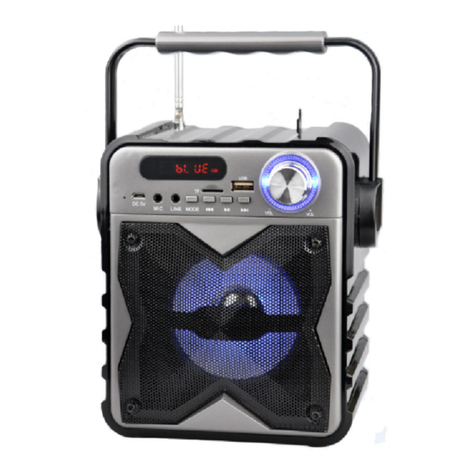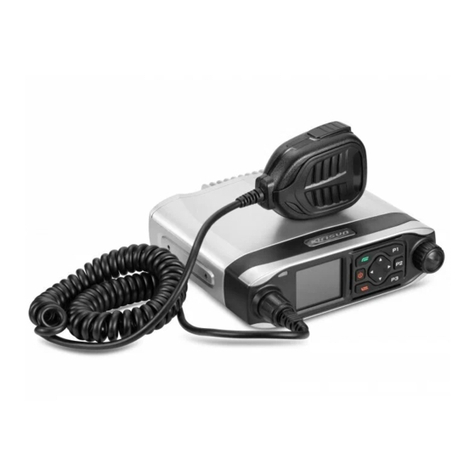
2004 Sep 13 8
Philips Semiconductors Product specification
Low-power FM stereo radio for
handheld applications TEA5768HL
7.7 IF filter
Fully integrated IF filter.
7.8 FM demodulator
The FM quadrature demodulator has an integrated
resonator to perform the phase shift of the IF signal.
7.9 Level voltage generator and analog-to-digital
converter
TheFMIFanaloglevelvoltage is convertedto4 bits digital
data and output via the I2C-bus.
7.10 IF counter
The IF counter outputs a 7-bit count result via the I2C-bus.
7.11 Soft mute
The low-pass filtered level voltage drives the soft mute
attenuator at low RF input levels. The soft mute function
can be switched off via the I2C-bus.
7.12 MPX decoder
The PLL stereo decoder is adjustment-free. The stereo
decoder can be switched to mono via the I2C-bus.
7.13 Signal dependent mono to stereo blend
With a decreasing RF input level the MPX decoder blends
from stereo to mono to limit the output noise. The
continuousmonotostereoblend can also be programmed
viathe I2C-bus to an RFleveldepending switched mono to
stereo transition. Stereo Noise Cancelling (SNC) can be
switched off via the I2C-bus.
7.14 Signal dependent AF response
Theaudio bandwidth will be reduced with a decreasing RF
input level. This function can be switched off via the
I2C-bus.
7.15 Software programmable ports
Two software programmable ports (open-collector) can be
addressed via the I2C-bus.
The port 1 (pin SWPORT1) function can be changed with
write data byte 4 bit 0 (see Table 13). Pin SWPORT1 is
then output for the ready flag of read byte 1.
8I
2C-BUS AND BUS-CONTROLLED FUNCTIONS
8.1 I2C-bus specification
InformationabouttheI2C-buscanbefoundinthe brochure
“The I
2
C-bus and how to use it”
(order number
9398 393 40011).
The standard I2C-bus specification is expanded by the
following definitions.
IC address C0: 1100000.
Structure of the I2C-bus logic: slave transceiver.
Subaddresses are not used.
The maximum LOW-level input and the minimum
HIGH-level input are specified to 0.2VCCD and 0.45VCCD
respectively.
The pin BUSMODE must be connected to ground.
Before any READ or WRITE operation the pin
BUSENABLE has to be HIGH for at least 10 µs.
Note: The bus operates at a maximum clock frequency of
400 kHz. It is not allowed to connect the IC to a bus
operating at a higher clock rate.
8.1.1 DATA TRANSFER
Datasequence:address, byte 1,byte 2, byte 3,byte 4and
byte 5 (the data transfer has to be in this order). The
LSB = 0of the addressindicatesa WRITE operation tothe
TEA5768HL.
Bit 7 of each byte is considered as the MSB and has to be
transferred as the first bit of the byte.
The data becomes valid bitwise at the appropriate falling
edge of the clock. A STOP condition after any byte can
shorten transmission times.
When writing to the transceiver by using the STOP
condition before completion of the whole transfer:
•The remaining bytes will contain the old information
•Ifthetransferofa byte is not completed, the new bits will
be used, but a new tuning cycle will not be started.
The IC can be switched into a low current standby mode
with the standby bit; the bus is then still active. The
standby current can be reduced by deactivating the bus
interface (pin BUSENABLE LOW). If the bus interface is
deactivated (pin BUSENABLE LOW) without the standby
mode being programmed, the IC maintains normal
operation, but is isolated from the bus lines.

